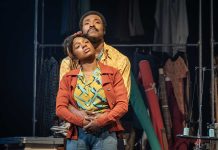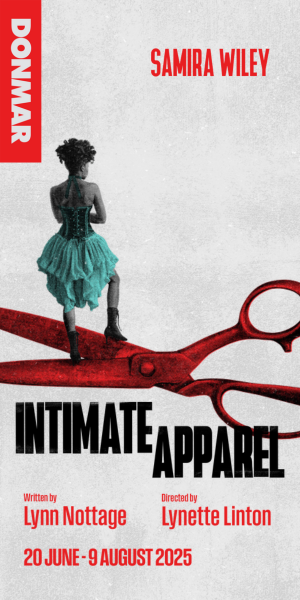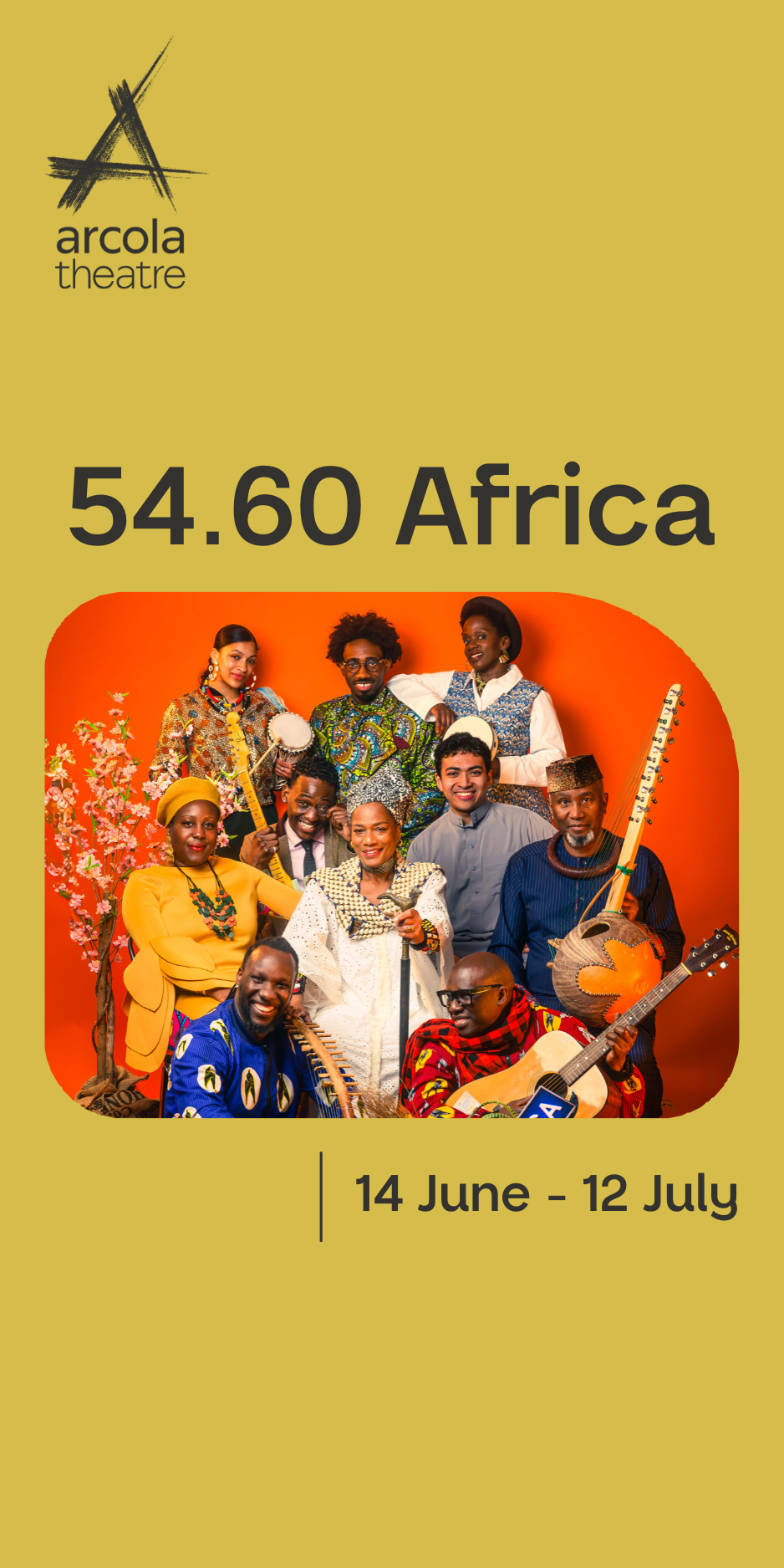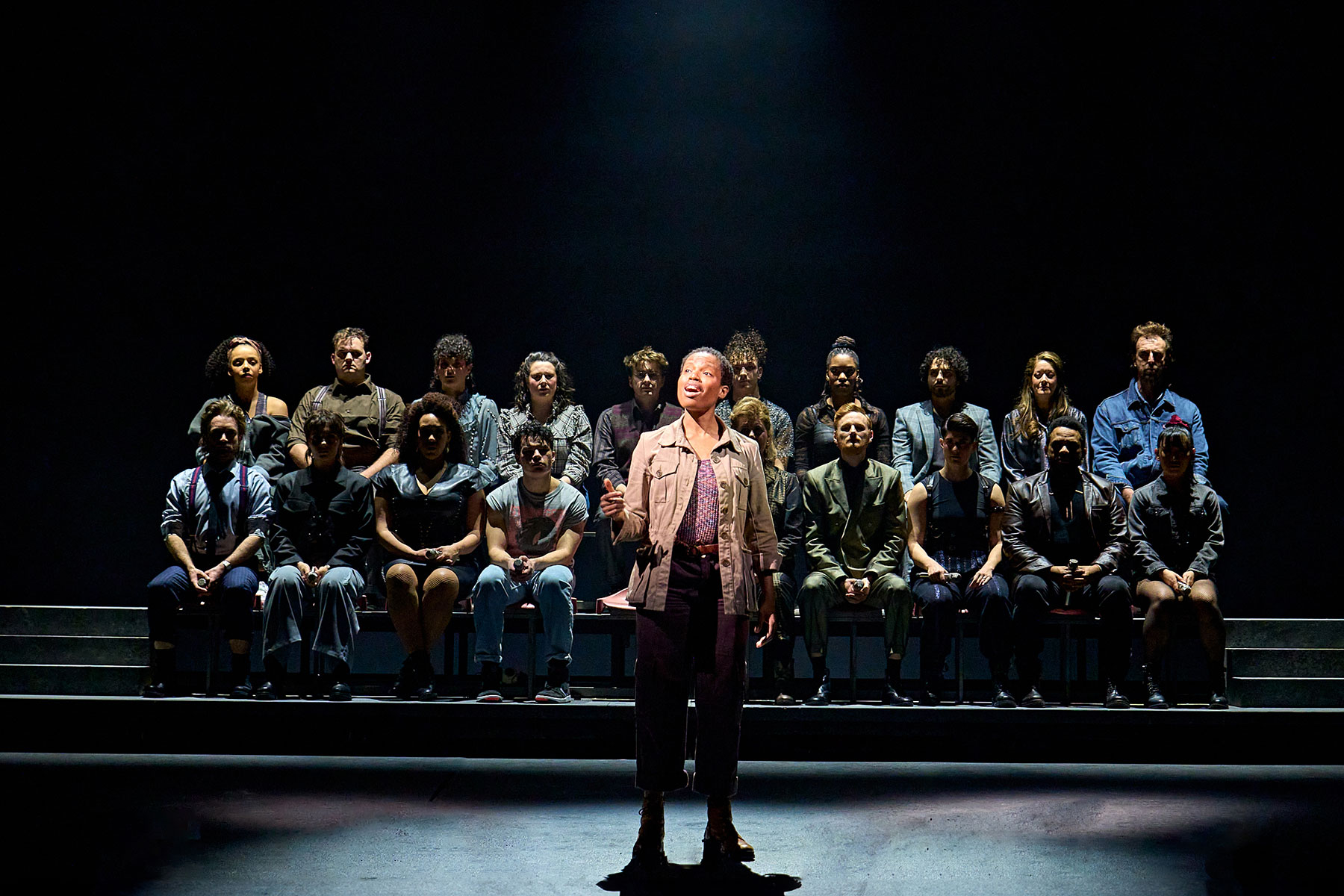
Just For One Day’ is an intriguing hybrid of contemporary theatre and ‘jukebox musical’; combining a tight onstage live band with a 26-strong group of talented singers and performers to tell a story that – having been born of a single, fierce human impulse – challenged the world to become ‘more than just a part of its sums’.
The staging is simple: a 6-piece band is elevated at the back of the stage; in front of which a collapsible row of ‘grandstand bleachers’ are retracted or extended, as required. On either side, stadium lights are approximated. Various items of furniture, scenery – and other props – are brought on and off by the cast, depending on the needs of the song or vignette.
The musicianship is uniformly good. As a fledgling music-fiend, I remember cutting my music-viewing teeth by recording almost all of the Live Aid performances onto two VHS cassettes, before re-watching them slavishly over many subsequent months and years. My ‘Live Aid experience’ was of staying in all day to watch – and ‘record’ – any performer that ‘took my fancy’. I even stayed up all night to record much of the Philadelphia set. With my burgeoning hunger for musical eclecticism, my prized footage – still ‘findable’ within my ‘hoarders paradise’ of VHS tapes – included U.S. segments by Phil Collins, Patti Labelle, B.B. King and Led Zeppelin, to accompany the Wembley footage of U2, Queen and Phil Collins.
Bearing in mind just how diverse charity music became, in subsequent high-profile concerts – as well as in my own experience – it’s now apparent just how parochial was the contemporaneous Anglo-American Pop/ Rock initially used as a template to avert world hunger.
Precious little Rap, Jazz, Blues, Rhythm ’n’ Blues, or Soul were to be heard upon the stages of either Wembley, or its American counterpart in Philadelphia, USA (above performers, notwithstanding). Understandably, these genres are equally under-represented during this production. What we get are proficient, well-sung, tightly-arranged – oftentimes eerily-effective – representations of the most impactful songs and performances of the Band Aid/ Live Aid experience. In this regard, the brief is executed admirably.
Thankfully the production isn’t merely a juke-box musical or an exercise in nostalgic whimsy. Rather, it is an exploration and examination of the humanizing qualities of empathy and compassion. Indeed – alongside the generation-spanning sub-plot of narrator ‘Suzanne’ (excellently portrayed by both Jackie Clune and Hope Kenna) – the piece can be seen as a misty-eyed requiem for a more… hopeful – and bygone – age. A lament for a generation (youth) gone by.
In 1984, Bob Geldof’s inability to turn his eyes – or his heart – away from a BBC report of Ethiopia’s apocalyptic famine kick-started the events that led up to that year’s Band Aid single. Swiftly written, in conjunction with Ultravox’s Midge Ure, Bob quickly gathered the assistance of promoter Harvey Goldsmith, most of Britain’s Pop elite, the British press – and even then-Prime Minister Margaret Thatcher.
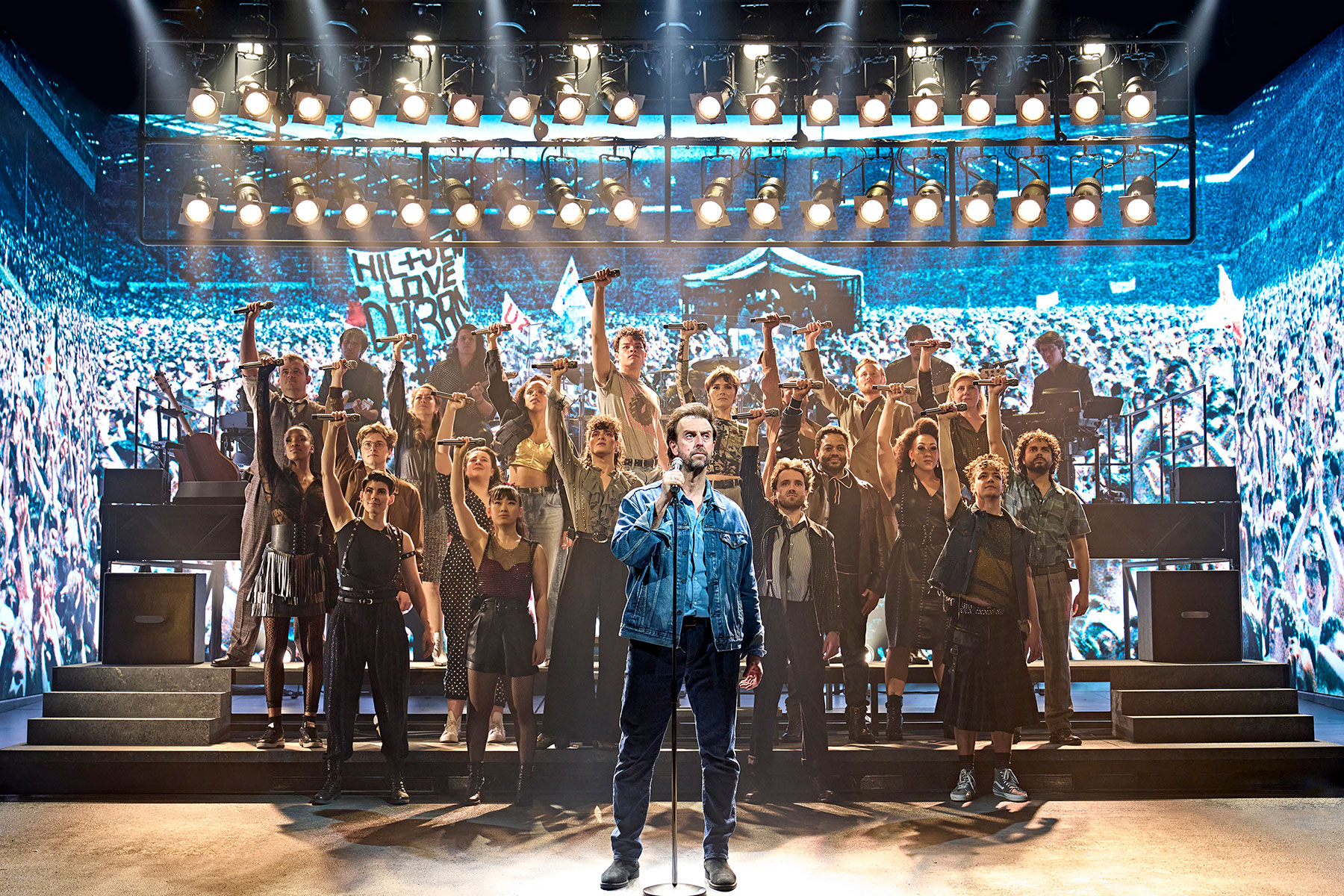
Geldof’s abrasiveness helped to mine an ‘empathy seam’ initially created – and vacated – by UK’s Left-leaning Red Wedge movement, with its beleaguered Union-centric focus on the under-represented poor. Indeed, throughout the next two decades, Live Aid became a world-wide template for a Pop music industry increasingly struggling for relevance, coherence and solvency within an emerging social-media (digital) age.
In this production, songs by David Bowie, Queen, Ultravox and Geldof’s own Boomtown Rats are skillfully delivered, in conjunction with various dramatic and comedic skits; each adding to the story that helped re-shape the musical – and humanitarian – landscape.
Musical highlights include poignant deconstructions of ‘Feed the World’ – expertly sung by Craige Els and Jack Shalloo (‘Bob’ and ‘Midge Ure’ respectively) – and of Ultravox’s ‘Dancing with tears in my eyes’ and ‘Vienna’ (Shalloo, again).
Other stand-outs include The Cars’ ‘Drive’, Bob Dylan’s classic ‘Blowin’ in the wind’ (both sung beautifully by Abiona Omonua), Phil Collins’ ‘In the air tonight’ (sung by Joel Montague), The Who’s ‘Tommy’ and ‘My Generation’, and a superb mash-up duet of Elton John’s ‘I’m still standing’ and Police’s ‘Message in a bottle’ (performed by Craige Els and Julie Atherton as ‘Bob Geldof’ and ‘Margaret Thatcher’ respectively).
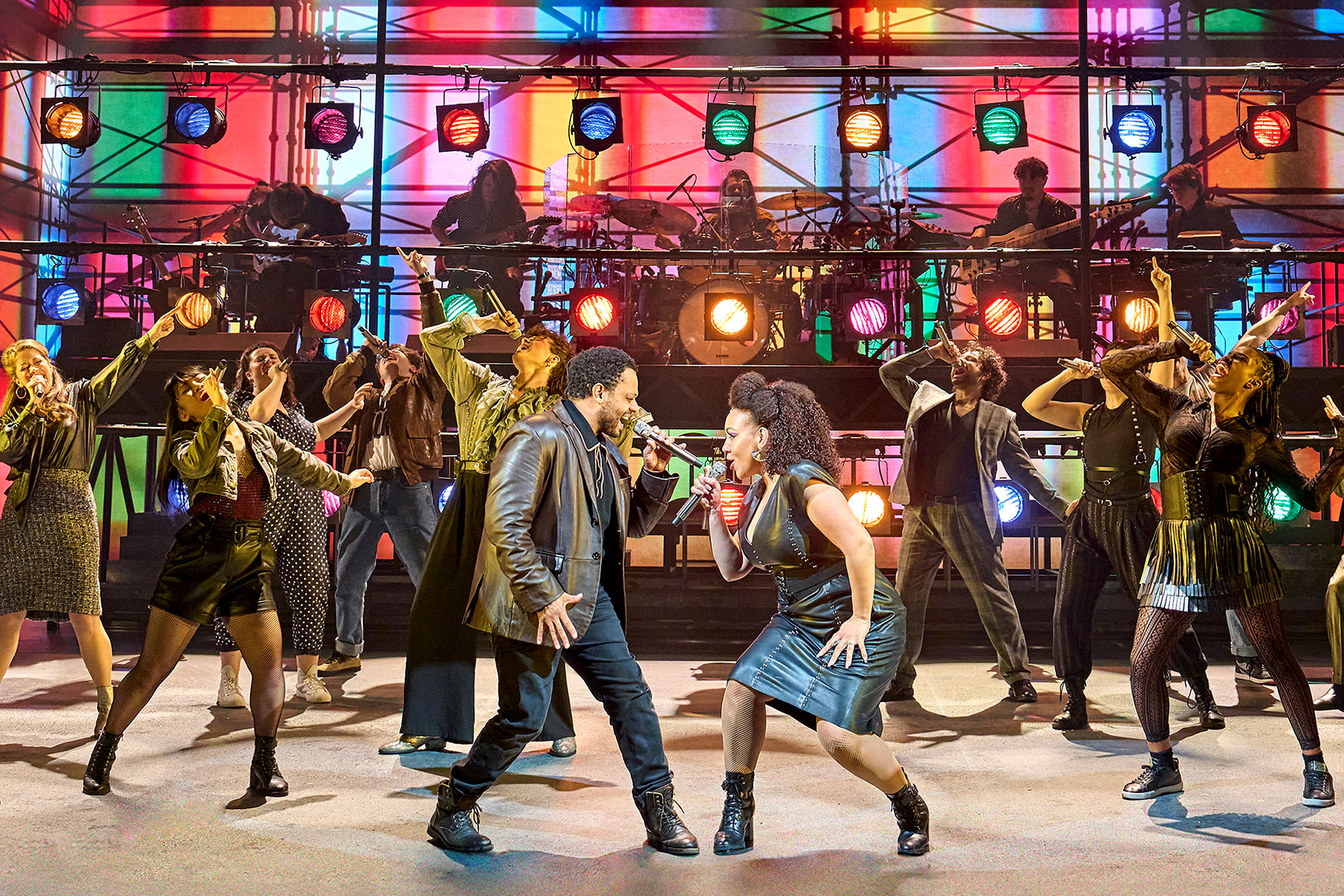
Els’ depiction of Geldof’s conflicted energy and tormented perseverance root the production in an authenticity seldom explored within the musical theatre genre. By the same token, there are several reminders – delivered by Black narrator ‘Amarra’ (Omonua) – that Africa is no beleaguered, homogenous charity-case; no simple cause celebre, nor economic or cultural ‘basket case’.
Sustained plaudits must go to the wonderfully emotive singing of Abiona Omonua and the sonorous Danielle Steers (‘Marsha’); as well as to writer John O’Farrell, Director Luke Sheppard, Arranger/ Orchestrator Matthew Brind, Musical Director Stuart Burt, Howard Hudson (Lighting) and Gareth Owen (Sound).
Speaking of ‘Sound’, Joseph Green, Ollie Dudman and Florence Hud also deserve a shout-out.
The frequency and sustained quality of the many differing sound-states – whether through head or cordless mics – is highly impressive. To maintain both clarity and versatility for such a large number of singers is no mean feat. One such notable moment is the dramatically evocative atmosphere created during Dylan’s ‘Blowing in the wind’ – bravo.
This piece seeks to align Generation X’s (born 1965-1980) once-youthful search for group identity, with the sober realisation that we have bequeathed – to the current Generation (‘Z’) – many of the fruits of our failures. Just For One Day’ is as much an attempt at cultural absolution, as it is ‘celebration’. In this regard, it is a valiant attempt. Much like the day itself, its qualities and achievements should not go ignored.

















